Tokujin Yoshioka’s flaming glass cauldron sets Tokyo alight
Japanese designer Tokujin Yoshioka plays with fire with an exhibition of glass torches and cauldrons, on view at 21_21 Design Sight Gallery 3 in Tokyo (until 5 November 2023)
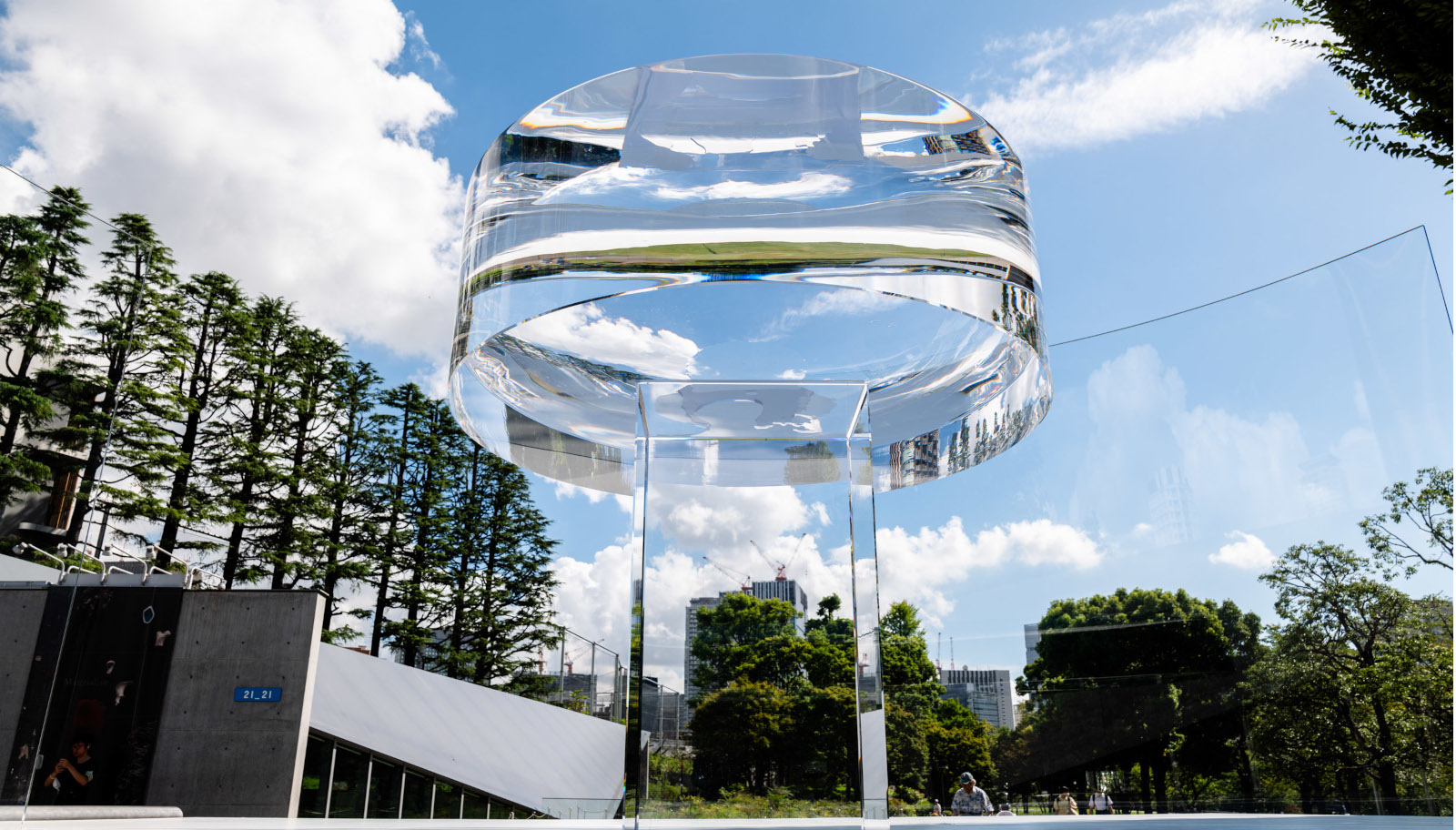
Fire and glass, light and air. Japanese designer Tokujin Yoshioka explores the edges of the elemental in his latest creations – a torch and cauldron crafted from glass. The minimalist glass pieces, defined by near-invisible sweeps of lines and curves, are understood to be the world’s first torch and cauldron made of glass and will be used in a sports event in Japan in 2024.
The works follow nearly three years of Tokujin’s personal experimentations with the dynamic interplay between glass and fire, exploring ways to prevent the material from breaking at high temperatures. Now, the completed glass pieces are showcased in a new exhibition called 'Tokujin Yoshioka_Flame: Glass Torch and Cauldron', in the angular concrete confines of the Tadao Ando-designed 21_21 Design Sight Gallery 3 in Tokyo (until 5 November 2023).
Tokujin Yoshioka's glassware is inspired by light
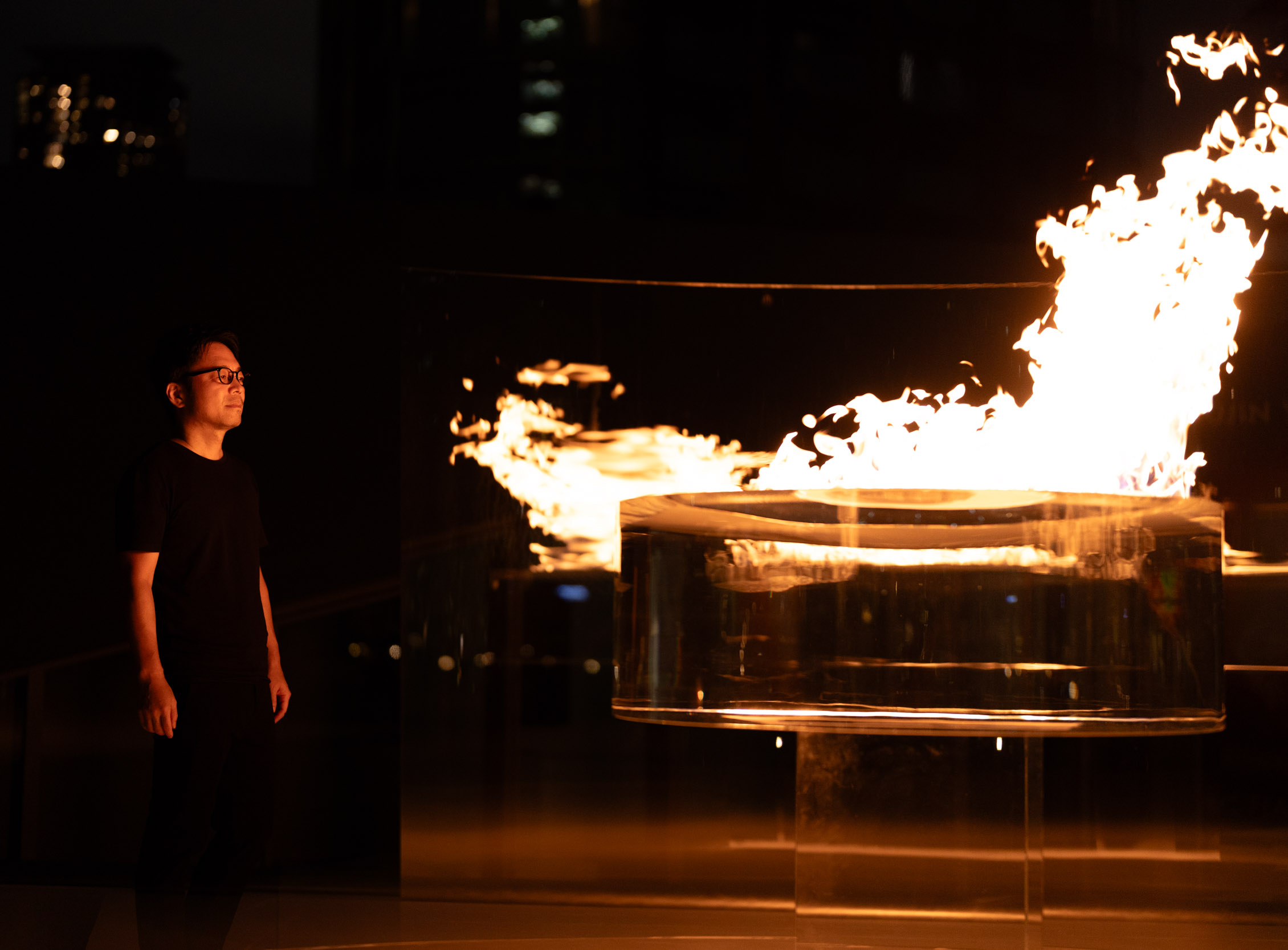
For Yoshioka, the project reflects his decades-long fascination with light and a desire to explore human existence beyond materiality. The inspiration behind these new glass pieces includes his lingering imprint of childhood memories seeing traditional wooden Japanese torches (known as taimatsu) ablaze during shrine and temple festivals.
'My intention with this glass torch and cauldron is to show the beauty of the flame,' Yoshioka tells Wallpaper*. 'I’ve long explored expressions of light as a natural phenomenon. The flame of a fire is the source of light.'

The glass works emerge three years after his Tokyo Olympic torch, a cherry blossom-inspired design in recycled aluminium, was used during the 2021 games. 'At the start, I had the idea of designing the Olympic torch in glass,' he says. 'But it didn’t happen, as the concept of making a glass torch was completely unprecedented.'
After the games, curiosity propelled him to dive deeply into researching glass and fire. 'I love being motivated by a challenge, so after a lot of experiments – and a lot of patience – finally the glass torch was realised.'
Centre stage in the exhibition is a medley of torches – each with a silhouette of straight lines flowing into a softly curved opening at the apex.
Receive our daily digest of inspiration, escapism and design stories from around the world direct to your inbox.

Highlighting the biggest challenge, Yoshioka explains: 'Glass itself is made using heat, so it’s very fragile and reactive to [being] heated by a flame, and breaks very easily. We had to find a way to make sure it was strong enough to withstand the heat.'
The solution was to create a double-layered glass structure – with two separately crafted pieces brought together – enabling the air to circulate as the liquid fuel burns and the heat to disperse in the handle.

Rising 68cm in height, the torch takes one to two months to make, with each piece manufactured individually, using glass with the highest level of heat resistance. Nearby sit the minimalist curves and magnifying depth of a solid glass lens – weighing an impressive 85kg – which Yoshioka designed with the idea of using it to naturally ignite a flame for the torch, through a concentration of sunlight.
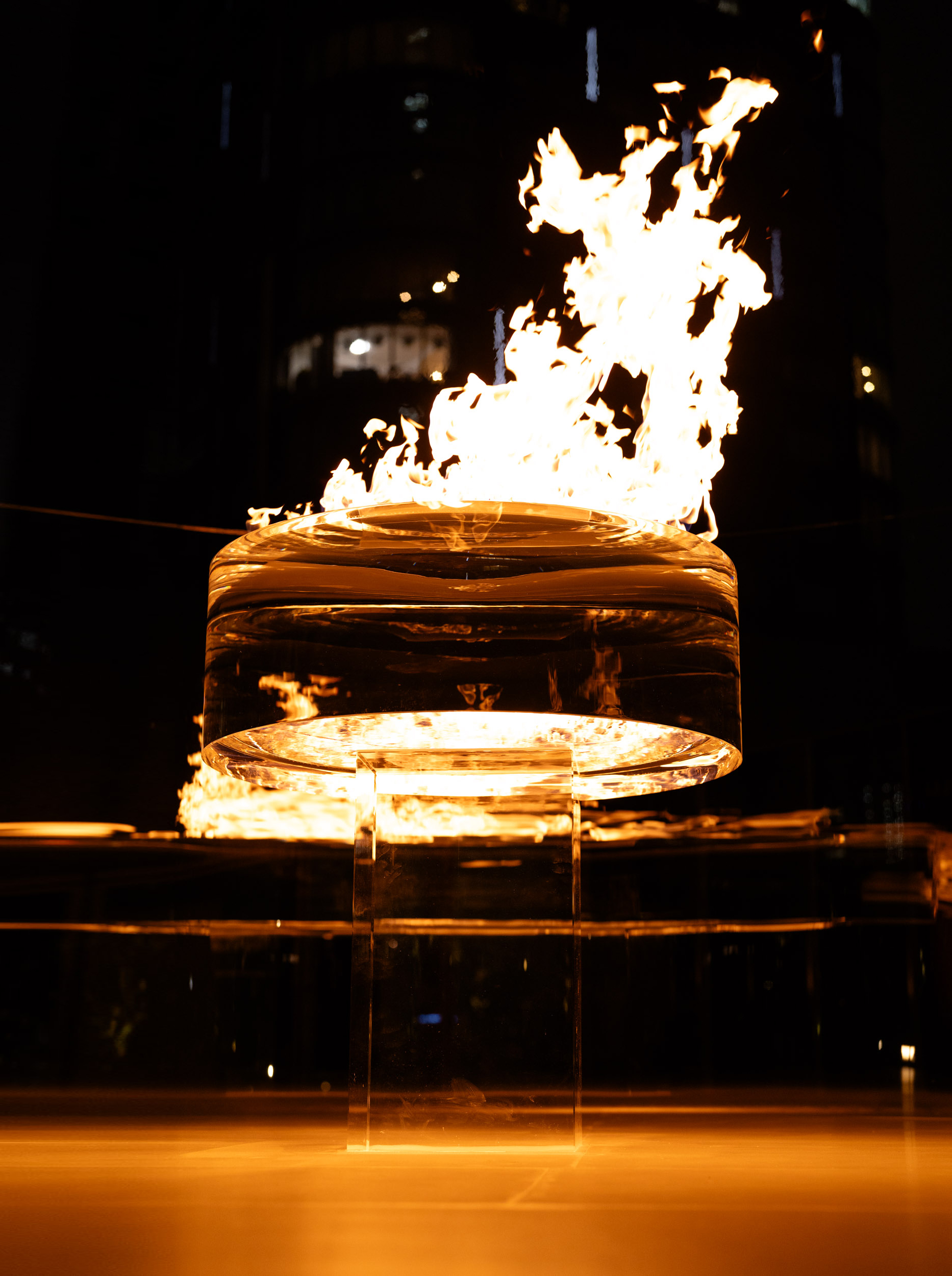
A circular sweep of a dress designed by Miyake Design Studio is displayed in another corner of the gallery, created for torch bearers to wear when lighting the cauldron, while Yoshioka’s iconic ‘Water Block’ bench is also on display.
However, the scene-stealer is the glass cauldron itself, which, along with the torch, will be used in the Japan Games Saga 2024. Simplicity and translucency define the solid circular ice-like block, sculpted from 1.5 tonnes of glass, with a gently concave surface, which sits serenely in the open air, on a minimalist platform just outside the gallery.
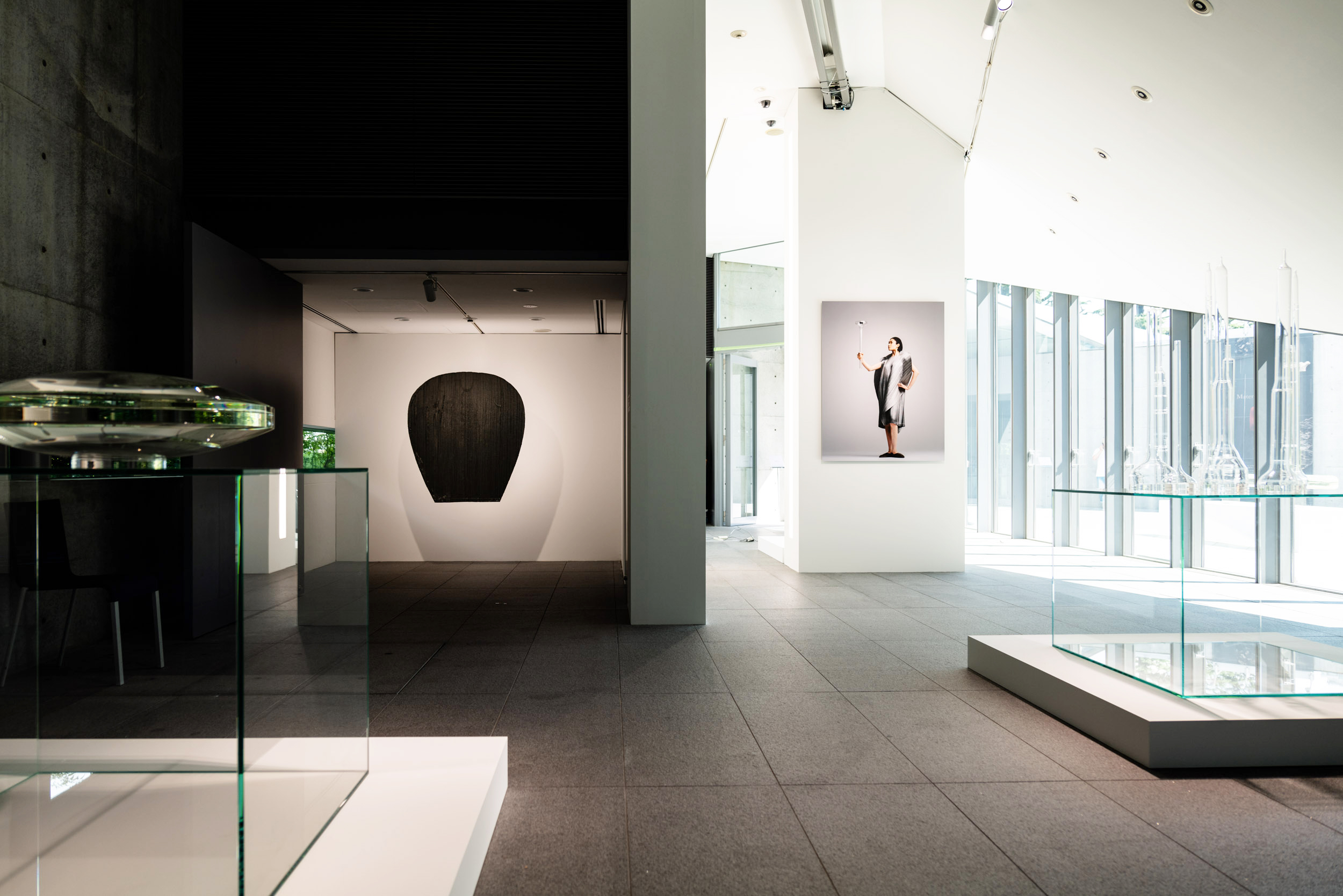
The cauldron is loosely wrapped by three 15mm-thick curved glass screens, designed to create a 'whirling updraft' to fuel a 'tornado of fire'. In sunlight, the entire glass installation both amplifies and disappears into its setting, with its surroundings – green trees, skyscrapers, Tokyo skies – captured in impressionist reflections.
Several times during the exhibition, Yoshioka will light up the cauldron. On the eve of the exhibition, just after sunset, he lit the cauldron for the first time using a torch – lighting up night skies in a sea of blazing flame reflections. Speaking after, he reflected on seeing the 'dynamic' culmination of a years-long project: 'The flame lit on the cauldron was what I was imagining and hoping to see.'
He adds: 'When I think about the future, I always hope to go beyond materiality. My creations have also evolved around human senses and experiences – one of which is using light as a material.'
'Tokujin Yoshioka_Flame: Glass Torch and Cauldron' is on view at 21_21 Design Sight Gallery 3 until 5 November 2023
9-7-6 Akasaka
Minato-ku
Tokyo 107-0052
Danielle Demetriou is a British writer and editor who moved from London to Japan in 2007. She writes about design, architecture and culture (for newspapers, magazines and books) and lives in an old machiya townhouse in Kyoto.
Instagram - @danielleinjapan
-
 Year in review: the shape of mobility to come in our list of the top 10 concept cars of 2025
Year in review: the shape of mobility to come in our list of the top 10 concept cars of 2025Concept cars remain hugely popular ways to stoke interest in innovation and future forms. Here are our ten best conceptual visions from 2025
-
 These Guadalajara architects mix modernism with traditional local materials and craft
These Guadalajara architects mix modernism with traditional local materials and craftGuadalajara architects Laura Barba and Luis Aurelio of Barbapiña Arquitectos design drawing on the past to imagine the future
-
 Robert Therrien's largest-ever museum show in Los Angeles is enduringly appealing
Robert Therrien's largest-ever museum show in Los Angeles is enduringly appealing'This is a Story' at The Broad unites 120 of Robert Therrien's sculptures, paintings and works on paper
-
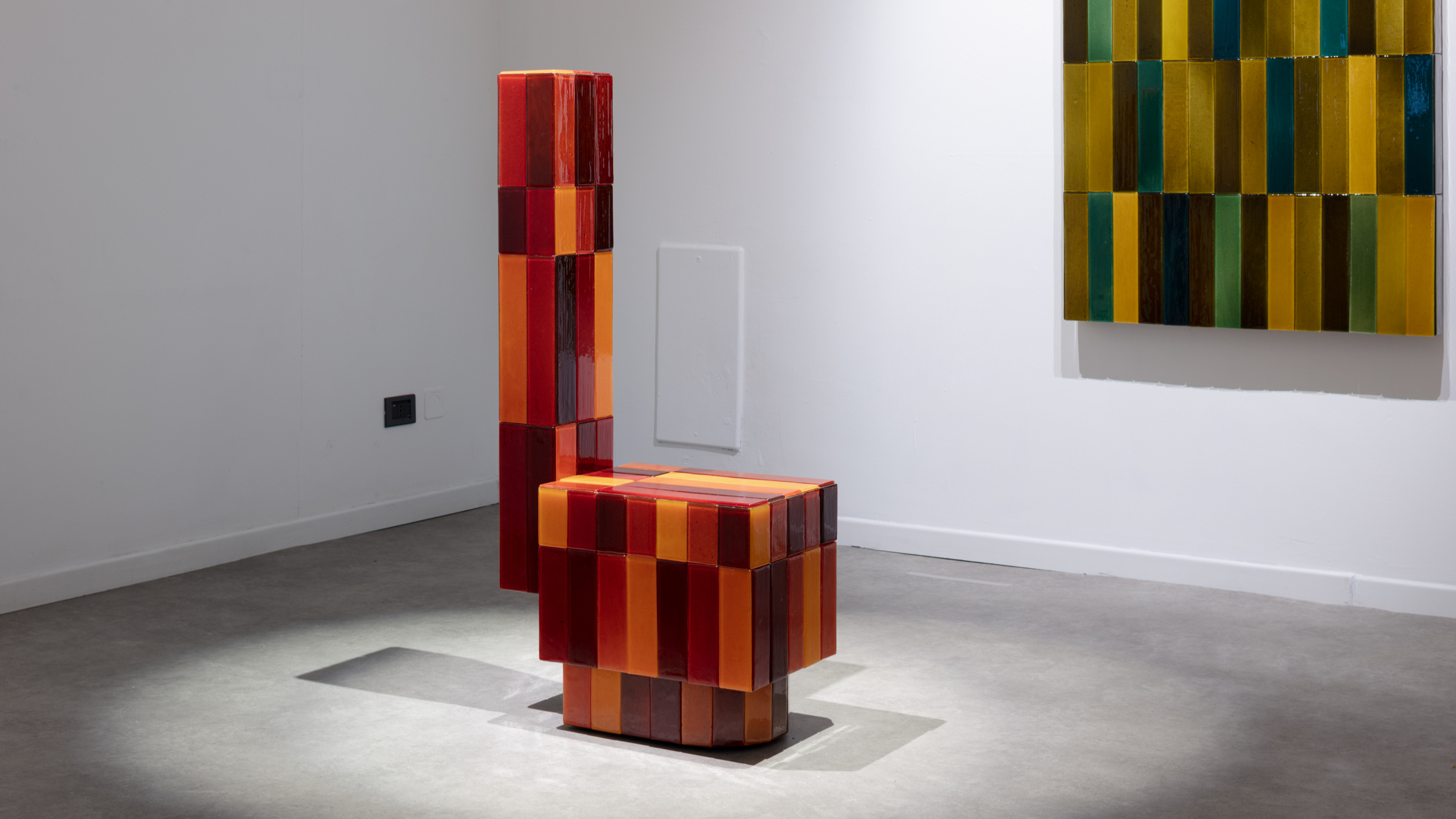 Tokyo design studio We+ transforms microalgae into colours
Tokyo design studio We+ transforms microalgae into coloursCould microalgae be the sustainable pigment of the future? A Japanese research project investigates
-
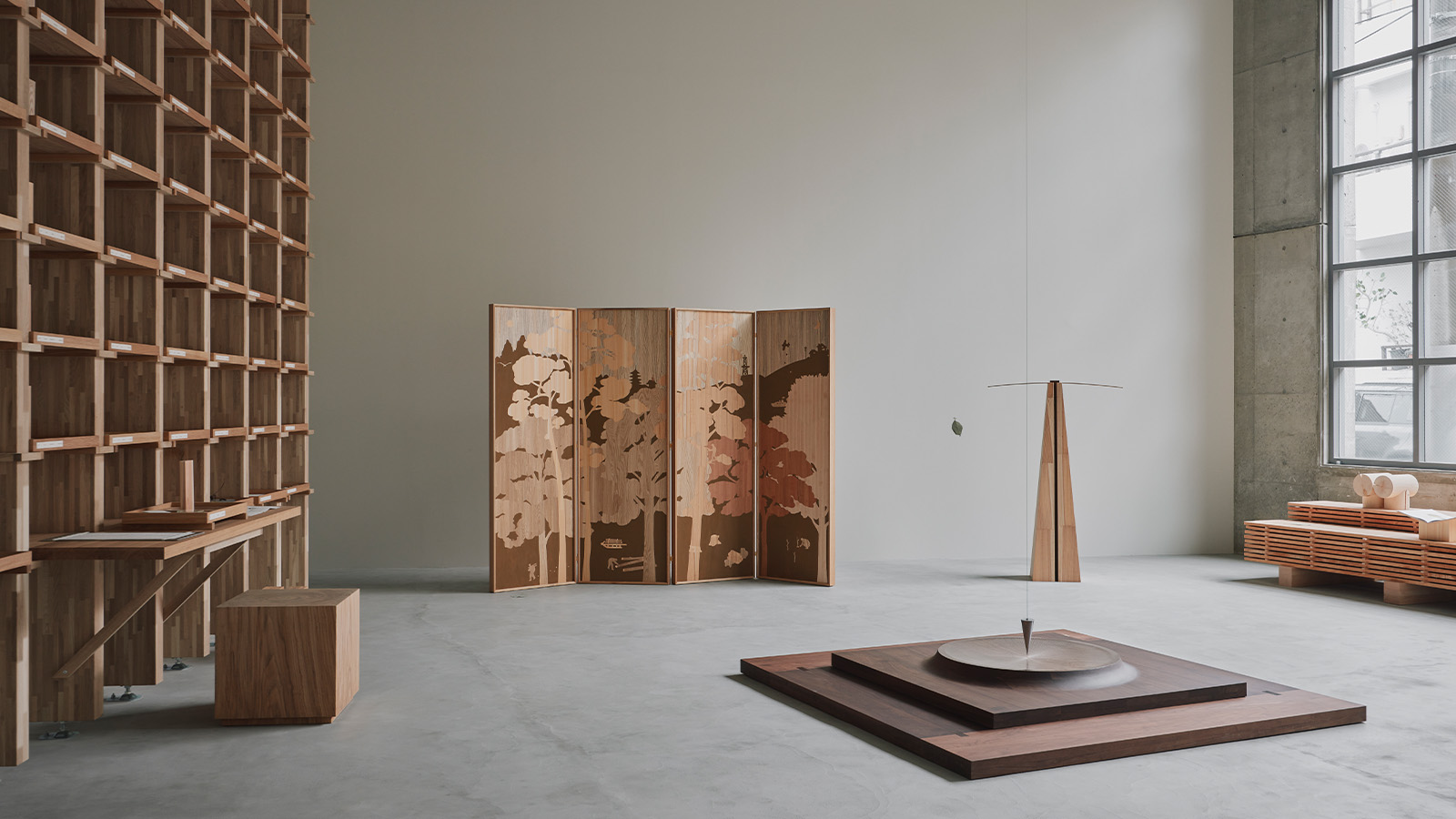 Time, beauty, history – all are written into trees in Karimoku Research Center's debut Tokyo exhibition
Time, beauty, history – all are written into trees in Karimoku Research Center's debut Tokyo exhibitionThe layered world of forests – and their evolving relationship with humans – is excavated and reimagined in 'The Age of Wood', a Tokyo exhibition at Karimoku Research Center
-
 Minimal curves and skilled lines are the focal point of Kengo Kuma's Christmas trees
Minimal curves and skilled lines are the focal point of Kengo Kuma's Christmas treesKengo Kuma unveiled his two Christmas trees, each carefully designed to harmonise with their settings in two hotels he also designed: The Tokyo Edition, Toranomon and The Tokyo Edition, Ginza
-
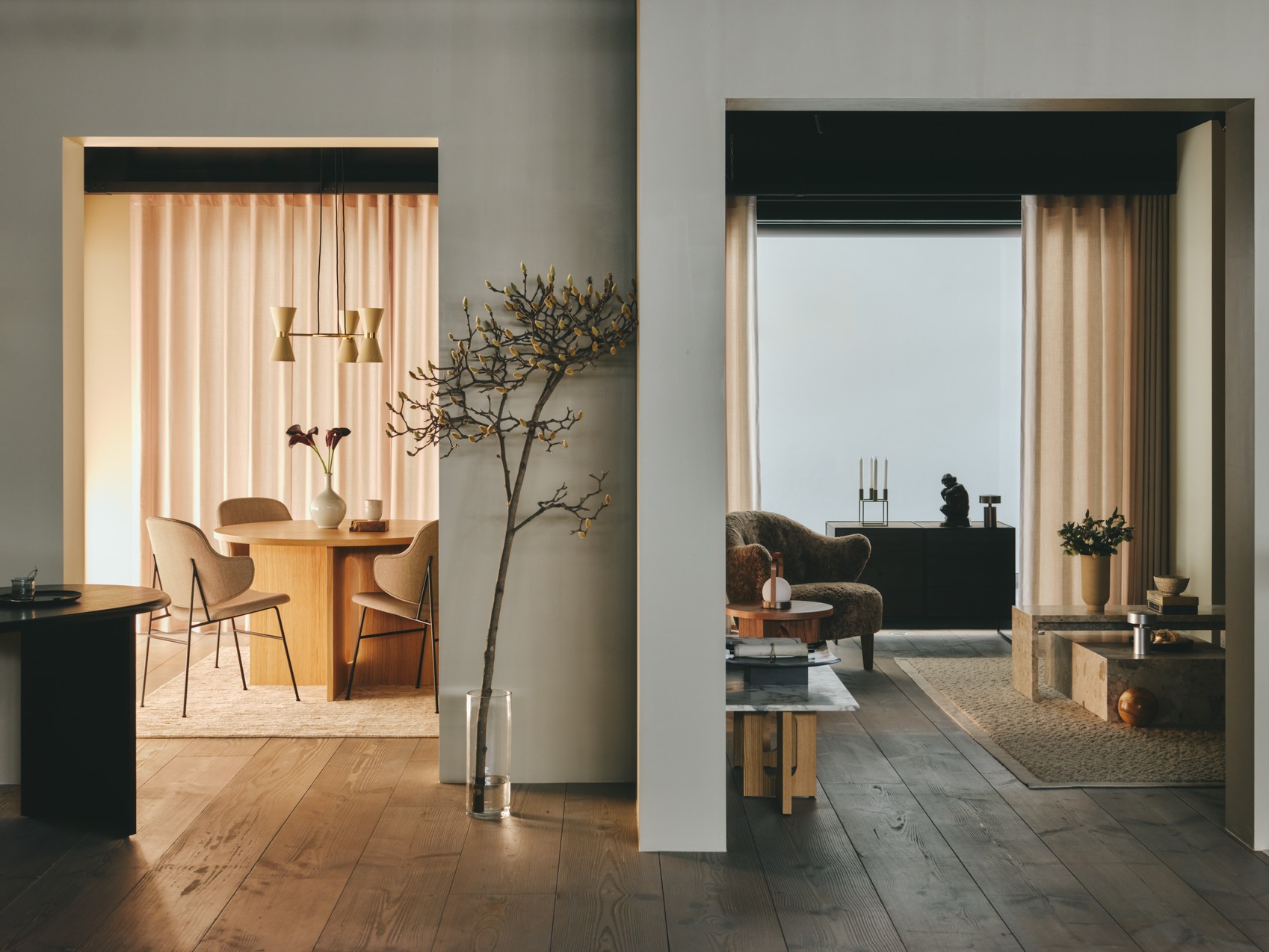 Newly-opened Audo in Tokyo brings Copenhagen aesthetic to Japan
Newly-opened Audo in Tokyo brings Copenhagen aesthetic to JapanDenmark meets Japan: Audo Tokyo opens with a serene series of scenescapes that offers a sensory immersion in the brand's aesthetics
-
 Azabu Hills Residence by Karimoku Case is defined by peaceful interiors and Japanese design
Azabu Hills Residence by Karimoku Case is defined by peaceful interiors and Japanese designKarimoku Case reveals Azabu Hills Residence, the lifestyle brands tenth project, a minimal modern home that is a serene escape from city living
-
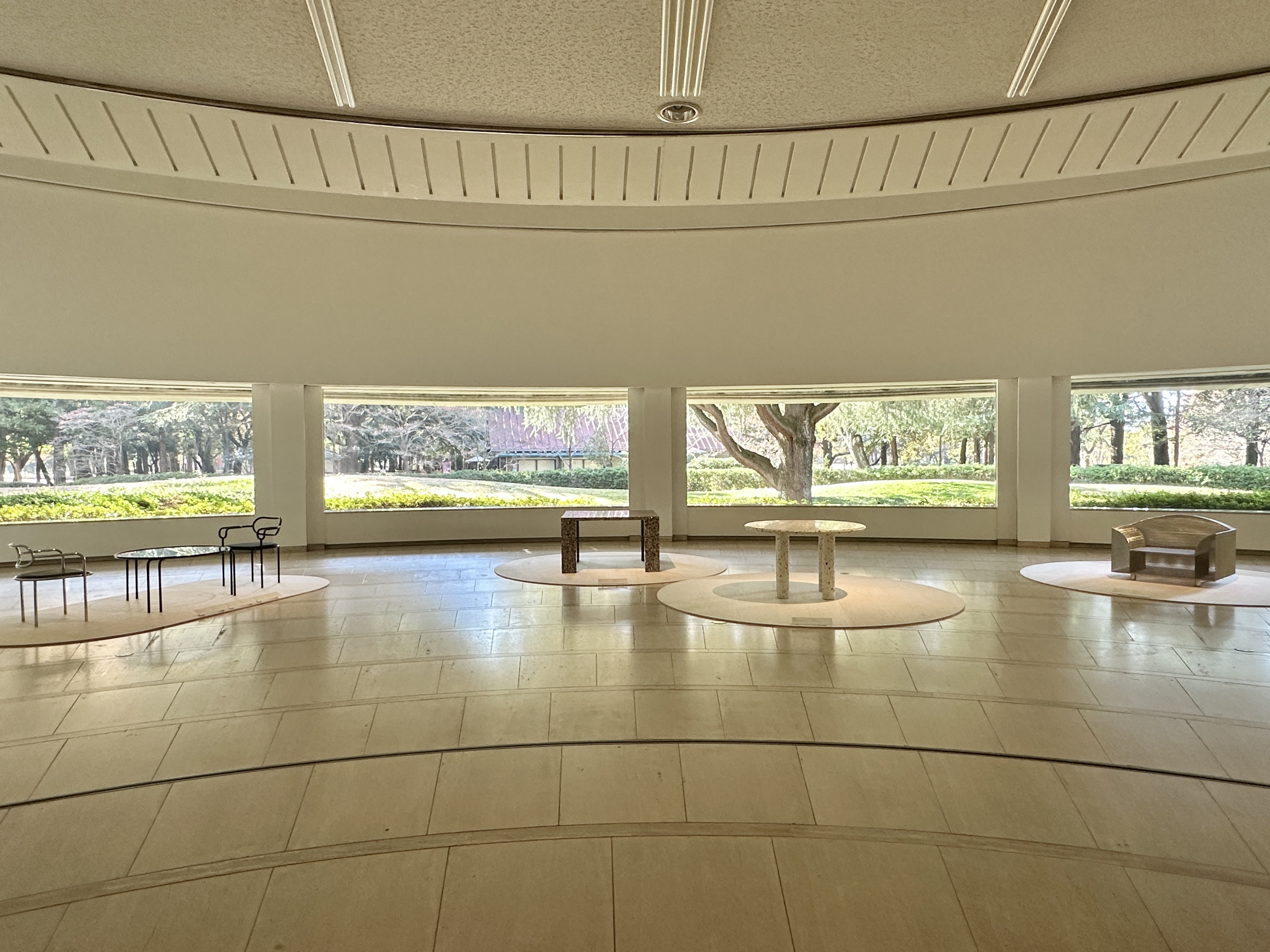 Shiro Kuramata’s multilayered cosmos on view in Tokyo
Shiro Kuramata’s multilayered cosmos on view in Tokyo‘The Work of Shiro Kuramata: A Microcosmos of Memory’ is on view at Setagaya Art Museum until 28 January 2024
-
 The Conran Shop opens new ‘locally edited’ Tokyo concept store
The Conran Shop opens new ‘locally edited’ Tokyo concept storeNew Conran Shop Tokyo concept store opens in Daikanyama as the retailer's first ‘locally edited’ store, sourcing and curating a unique range of design objects crafted across Asia
-
 Hot sheets: paper turns over a new leaf in Tokyo
Hot sheets: paper turns over a new leaf in Tokyo